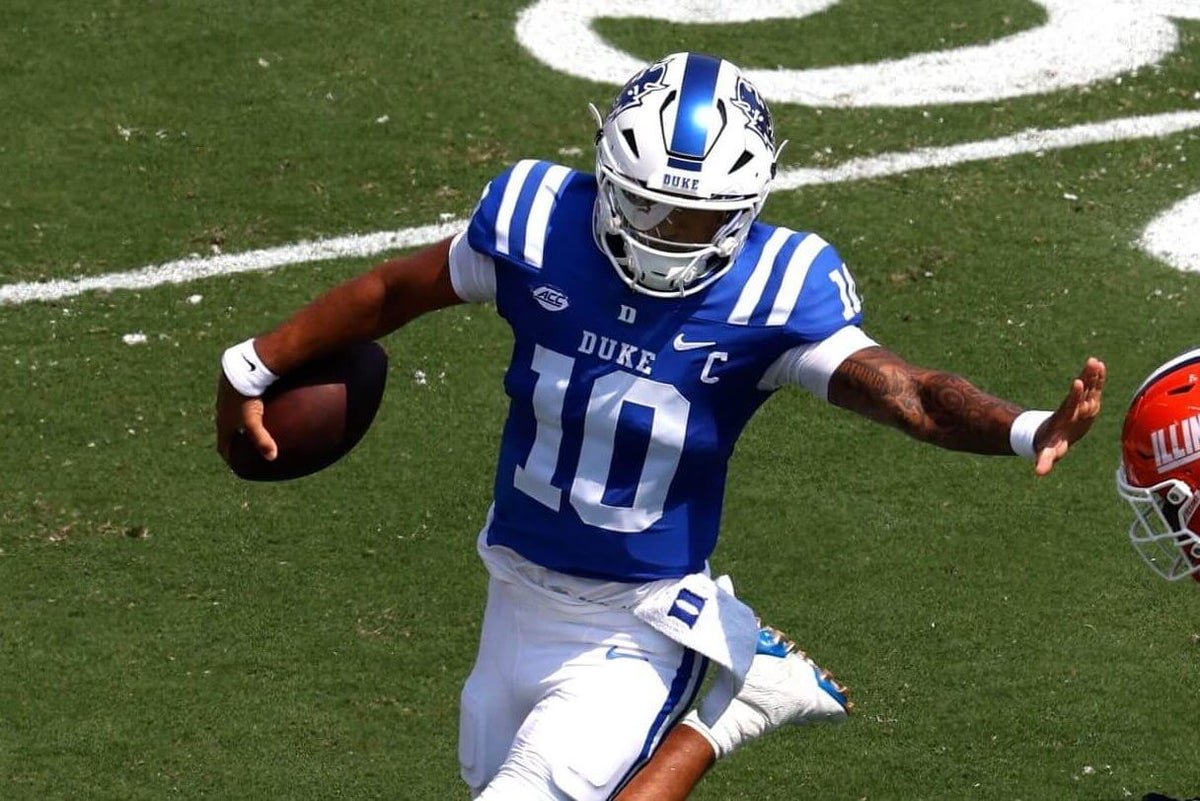If you listen to music the way a lot of people do these days — with a pair of wireless earbuds, from a Bluetooth speaker, or just blaring directly out of your phone — you will never notice a difference between Spotify’s high-quality 320Kbps streams and its lossless audio. But, if you usually listen with wired headphones while working at your desk, or have a quality speaker from the likes of Bose that supports Spotify Connect, there actually is something to be gained here.
Top Stories
Cal Raleigh successful, 4 of 5 challenges reverse calls in first All-Star use of robot umpire

ATLANTA (AP) — Cal Raleigh was just as successful with the first robot umpire All-Star challenge as he was in the Home Run Derby.
Seattle’s catcher signaled for an appeal to the Automated Ball-Strike System in the first inning of the National League’s win Tuesday night, getting a strikeout for Detroit’s Tarik Subal on San Diego’s Manny Machado.
“You take ‘em any way you can get ’em, boys,” Skubal said on the mound.
Four of five challenges of plate umpire Dan Iassogna’s calls were successful in the first All-Star use of the ABS system, which could make its regular-season debut next year.
Athletics rookie Jacob Wilson won as the first batter to call for a challenge, reversing a 1-0 fastball from Washington’s MacKenzie Gore in the fifth inning that had been called a strike.
Miami’s Kyle Stowers lost when ABS upheld a full-count Andrés Muñoz fastball at the bottom of the zone for an inning-ending strikeout in the eighth.
Mets closer Edwin Díaz earned a three-pitch strikeout against Randy Arozarena to end the top of the ninth on a pitch Iassogna thought was outside.
Blue Jays catcher Alejandro Kirk used ABS to get a first-pitch strike on a 100.1 mph Aroldis Chapman offering to Brendan Donovan with two outs in the bottom half.
“The fans enjoy it. I thought the players had fun with it,” NL manager Dave Roberts of the Los Angeles Dodgers said. “There’s a strategy to it, if it does get to us during the season. But I like it. I think it’s good for the game.”
Skubal had given up Ketel Marte’s two-run double and retired the Dodgers’ Freddie Freeman on a groundout for his first out when he got ahead of Machado 0-2 in the count. Skubal threw a 89.5 mph changeup, and Iassogna yelled” “Ball down!”
Raleigh tapped his helmet just before Skubal tipped his cap, triggering a review by the computer umpire that was tested in spring training this year and could be adopted for regular-season use in 2026.
“Obviously, a strike like that it was, so I called for it and it helped us out,” Raleigh said.
An animation of the computer analysis was shown on the Truist Park scoreboard and the broadcast. Roberts laughed in the dugout after the challenge.
“I knew it was a strike,” Machado said.
Skubal doesn’t intend to use challenges during regular-season games if the ABS is put in place. He says he’ll rely on his catchers.
“I was joking around that I was going to burn two of them on the first balls just so that way we didn’t have them the rest of the game,” he said. “I’m just going to assume that it’s going to happen next year.”
Before the game, baseball Commissioner Rob Manfred indicated the sport’s 11-man competition committee will consider the system for next season.
“I think the ability to correct a bad call in a high-leverage situation without interfering with the time of game because it’s so fast is something we ought to continue to pursue,” Manfred said.
ABS decisions may have an error of margin up to a half-inch.
“Our guys do have a concern with that half inch, what that might otherwise lead to particularly as it relates to the number of challenges you may have, whether you keep those challenges during the course of the game,” union head Tony Clark told the Baseball Writers Association of America. “Does there need to be some type of buffer zone consideration? Or do we want to find ourselves in a world where it’s the most egregious misses that we want focus in on?”
Manfred sounded less concerned.
“I don’t believe that technology supports the notion that you need a buffer zone,” he said. “To get into the idea that there’s something that is not a strike that you’re going to call a strike in a review system, I don’t know why I would want to do that.”
MLB sets the top of the automated strike zone at 53.5% of a batter’s height and the bottom at 27%, basing the decision on the midpoint of the plate, 8 1/2 inches from the front and 8 1/2 inches from the back. That contrasts with the rule book zone called by umpires, which says the zone is a cube.
“We haven’t even started talking about the strike zone itself, how that’s going to necessarily be measured, and whether or not there are tweaks that need to be made there, too,” Clark said. “So there’s a lot of discussion that still needs to be had, despite the fact that it seems more inevitable than not.”
Manfred has tested ABS in the minor leagues since 2019, using it for all pitches and then switching to a challenge system. Each team gets two challenges and a successful challenge is retained. Only catchers, batters and pitchers can call for a challenge.
“Where we are on ABS has been fundamentally influenced by player input,” he maintained. “If you had two years ago said to me: What do the owners want to do? I think they would have called every pitch with ABS as soon as possible. That’s because there is a fundamental, very fundamental interest in getting it right, right? We owe it to our fans to try to get it right because the players as I talked to them over a couple of years really, expressed a very strong interest or preference for the challenge system that we decided to test.”
Skubal wondered is all contingencies had been planned for.
“If power goes out and we don’t have ABS — sometimes we don’t have Hawk-Eye data or Trackman data. So what’s going to happen then?” he said. “Are we going to expect umpires to call balls and strikes when it’s an ABS zone?”
___
AP MLB: https://apnews.com/hub/MLB
Top Stories
College football Week 3 best bets: Will Darian Mensah put up a big game against his former team?

“Sometimes it’s best to be lucky” sums up last week’s best bets from my College Football Projection Model. The model churned out a winning week, but the way that two of the winners got home was impressive.
Louisville and Syracuse, both favorites, somehow managed to cover by the hook (the final half-point of a spread) in games that I wasn’t even sure they were going to win. So yeah, it pays to be lucky. If there is a lesson, though, it’s that both games won by the hook, but if you didn’t bet them at the number that I bet during publish, you either pushed or lost. Even my worst price to bet would have gone 1-0-1 but the closing line would have gone 0-1-1. I say it every week, but getting the best of the number is vital to long-term success.
Last week’s record: 3-2, +0.80 units
Season record: 5-4, +0.60 units, 6.0% ROI
Five bets to kick off Week 3, and at least three that are a half-point off from getting onto the card, so stay tuned there. Hopefully we can have a big week, but I’ll settle for a modest winning one like last week. As always, shop around for the best price and good luck!
College football Week 3 best bets
Colorado +4.5 (-110) at Houston
I don’t like this bet one bit, but the numbers are what they are. I think Houston is improved and Colorado is trending down, but this is a bit too much for my taste. This seems like a buy-low spot on Colorado and a sell-high spot on Houston. My numbers actually have this game closer to a pick ’em, so getting 4.5 is a must-buy.
Worst price to bet: Colorado +4 (-110)
Arkansas at Ole Miss under 61.5 (-110)
Well, both of these teams like to play at a lightning pace and have scored 50-plus points in three of the four games they’ve played so far this season. Arkansas hasn’t played anybody good yet, and Ole Miss played Kentucky in their only game against solid competition. The total points in that game ended up being 53. I’m not saying we will see this game go into the low 50s, but I’m not as scared of the pace if I believe you’re going to struggle to find consistent offense down to down.
Worst price to bet: Under 61 (-110)
South Alabama at Auburn under 55.5 (-115)
Maybe I’m overrating the Auburn defense, but I think South Alabama is going to have loads of problems in this matchup. I also have an edge on Auburn against the spread here, but don’t really care to get involved in such a big spread. Similarly to the game above, South Alabama will want to play at a fast pace, but it doesn’t matter too much when you’re not able to move the ball. My only worry here is Auburn scoring a ton, but with two consecutive ranked road games on deck to precede a stretch of four ranked opponents in five weeks, I think they’ll want to get in and out with a clean bill of health.
Worst price to bet: Under 54.5 (-110)
Western Michigan at Illinois over 50.5 (-110)
The pace won’t be anything to get excited about here, but I think Western Michigan will play faster than expected. Last week against North Texas, the Broncos played incredibly slowly, but they were in the lead for the majority of the game. They’ll likely be trailing in this matchup, and their pace will likely match closer to their game against Michigan State. They’ll still need to find a way to move the ball, but my number on this total is in the mid-50s.
Worst price to bet: Over 51 (-110)
Duke at Tulane under 54.5 (-105)
BetMGM is giving us the best price in the market by a considerable margin here, so I’ll gladly scoop this up. Tulane is good, but I think the Duke defense will have a talent advantage to slow them down and keep this a lower-scoring game. Sure, some will say Duke quarterback Darian Mensah will want to put up a big game against his former team, but I’m not buying into that narrative. Let’s keep the fireworks to a minimum here, please.
Worst price to bet: Under 52.5 (-110)
New bets added Friday
South Carolina -3 (-110) vs. Vanderbilt
Worst price to bet: South Carolina -3 (-115)
(Photo of Darian Mensah: Lance King / Getty Images)
Top Stories
Fed’s Lisa Cook claimed second residence as ‘vacation home’ : NPR

Federal Reserve Board of Governors member Lisa Cook listens during an open meeting of the board at the Federal Reserve in Washington on on June 25.
Mark Schiefelbein/AP
hide caption
toggle caption
Mark Schiefelbein/AP
WASHINGTON — Federal Reserve Governor Lisa Cook referred to a condominium she purchased in June 2021 as a “vacation home” in a loan estimate, a characterization that could undermine claims by the Trump administration that she committed mortgage fraud.
President Donald Trump has sought to fire Cook “for cause,” relying on allegations that Cook claimed both the condo and another property as her primary residence simultaneously, as he looks to reshape the central bank to orchestrate a steep cut to interest rates. Documents obtained by The Associated Press also showed that on a second form submitted by Cook to gain a security clearance, she described the property as a “second home.”
Cook sued the Trump administration to block her firing, the first time a president has sought to remove a member of the seven-person board of governors. Cook secured an injunction Tuesday that allows her to remain as a Fed governor.
The administration has appealed the ruling and asked for an emergency ruling by Monday, just before the Fed is set to meet and decide whether to reduce its key interest rate. Most economists expect they will cut the rate by a quarter point.
Bill Pulte, a Trump appointee to the agency that regulates mortgage giants Fannie Mae and Freddie Mac, has accused Cook of signing separate documents in which she allegedly said that both the Atlanta property and a home in Ann Arbor, Michigan, also purchased in June 2021, were both “primary residences.” Pulte submitted a criminal referral to the Justice Department, which has opened an investigation.
Claiming a home as a “primary residence” can result in better down payment and mortgage terms than if one of the homes is classified as a vacation home.
The descriptions of Cook’s properties were first reported by Reuters.
Fulton County tax records show Cook has never claimed a homestead exemption on the condo, which allows someone who uses a property as their primary residence to reduce their property taxes, since buying it in 2021.
The White House did not immediately respond to a request for comment.
Top Stories
Spotify Lossless is an inconvenient improvement

Comparing Spotify’s normal quality streams (96Kbps) with the new 24-bit / 44.1kHz lossless FLAC files feels unfair. Even a relatively untrained ear should be able to hear the difference. While compression technology has improved a lot since the days of crunchy Napster MP3s, there is still a noticeable loss in quality at 96Kbps. High frequencies especially can seem muddy and distorted.
Even just jumping from normal quality to high quality (320Kbps) results in a very noticeable difference. But going beyond that to lossless, or even hi-res lossless on a competing service like Tidal, yields diminishing returns. I’d venture to guess that most people will be unable to tell the difference between Spotify’s high-quality streams and lossless under a lot of circumstances. If you’re listening to a hip-hop song that samples crackly vinyl, a metal record with heavily distorted guitars, or a dance single with a kick drum that’s been compressed into oblivion, it can be hard to pick out the differences. It’s not that they’re not there — Kendrick Lamar’s vocals cut through the mix more on “squabble up,” and Sudan Archives’ heavily processed violin on “DEAD” feels more lively — but they can be easily lost in the bombast.
Where lossless can make a big difference compared to Spotify’s standard high-quality setting is with gentler styles of music that feature a lot of acoustic instruments and vocals. My go-to throughout testing (because it was one of the only albums I could find that was available in lossless on Spotify and hi-res lossless on both Apple and Tidal) was Nina Simone’s Pastel Blues.
The differences between lossless and high quality are subtle, to be sure. Unless you’re actively listening for it, you might not notice the slightly different texture to the background noise on “Strange Fruit” or the ever-so-slightly sharper sound of the high-hats on “Sinnerman.” And when older recordings clip, the resulting distortion sounds less harsh in lossless.
To see these relatively minor benefits requires some effort on your part, though. First thing to note is that you cannot stream Spotify Lossless through the web player; you will need to download the desktop or mobile app. The other thing to remember is that Bluetooth generally does not support lossless audio because of its limited bandwidth. Even Spotify warns in its announcement post that “Bluetooth doesn’t provide enough bandwidth to transmit lossless audio, so the signal has to be compressed before being sent.” (Let’s not get distracted by discussion of codecs like LDAC and aptX HD that lack widespread support.)
If you want to hear the difference, you’ll need to put your AirPods down and go get a decent set of wired headphones. I do recommend headphones. While you can hear the difference on a good set of speakers, it’s easier to pick out the nuances in headphones without minimal background noise. You’ll need to enable lossless on each of your devices individually; it’s not a setting that will sync.
Spotify has caught some flack, however, for capping its lossless support at 24-bit / 44.1kHz, when Tidal, Apple Music, and Qobuz all offer 24-bit / 192kHz hi-res FLAC support. But, at the risk of upsetting the audiophiles in the audience, you’re not missing out. While I won’t pretend there’s no difference between lossless and hi-res lossless, the improvements are extremely subtle, and not worth the hassle. For one, playing back audio at 192kHz requires additional hardware in the form of an external digital-to-analog converter (DAC), or a select few Tidal Connect-enabled speakers. A DAC can run you anywhere from $50 for a cheap off-brand dongle for your phone to upward of $15,000 for the absolute lunatics out there.
I tested Spotify Lossless, as well as Apple Music and Tidal’s lossless and hi-res lossless, using my MacBook Air connected to a fourth-gen Focusrite Scarlett 18i20. I listened to a variety of styles of music using my PreSonus Eris E5 studio monitors, a pair of Sony MDR-7506 headphones, and TMA-2 Studio Wireless+ headphones from AIAIAI. I spent a lot of time making sure I could play back 192kHz audio, and volume matching the various services only to walk away wondering if I was imagining the differences.
Doing a side-by-side, I felt like the hi-res lossless “Strange Fruit” on Apple Music was ever-so-slightly clearer than the standard lossless version on Spotify. But I also felt like the standard lossless Apple FLAC was slightly less noisy than the Spotify FLAC. So it’s possible that Apple’s encodings are just higher-quality in general. I’m inclined to believe that because I honestly could not tell the difference between Apple’s regular lossless and hi-res lossless versions when played back to back.
Bandwidth also becomes a major issue when playing hi-res lossless files. Unless you’re downloading them for playback offline, just don’t bother. Apple Music frequently choked when trying to skip around a hi-res track and would often pause briefly after playing the first two seconds of a song.
Here’s the thing: Most of us tend to do a lot of our listening on Bluetooth headphones. And those don’t support lossless audio. If you have good wired headphones or a decent pair of speakers, Spotify’s lossless can make a subtle but noticeable improvement to your listening experience. Just don’t be jealous of those other services with “hi-res” audio.
-

 Business2 weeks ago
Business2 weeks agoThe Guardian view on Trump and the Fed: independence is no substitute for accountability | Editorial
-
Tools & Platforms1 month ago
Building Trust in Military AI Starts with Opening the Black Box – War on the Rocks
-

 Ethics & Policy2 months ago
Ethics & Policy2 months agoSDAIA Supports Saudi Arabia’s Leadership in Shaping Global AI Ethics, Policy, and Research – وكالة الأنباء السعودية
-

 Events & Conferences4 months ago
Events & Conferences4 months agoJourney to 1000 models: Scaling Instagram’s recommendation system
-

 Jobs & Careers2 months ago
Jobs & Careers2 months agoMumbai-based Perplexity Alternative Has 60k+ Users Without Funding
-

 Podcasts & Talks2 months ago
Podcasts & Talks2 months agoHappy 4th of July! 🎆 Made with Veo 3 in Gemini
-

 Education2 months ago
Education2 months agoVEX Robotics launches AI-powered classroom robotics system
-

 Education2 months ago
Education2 months agoMacron says UK and France have duty to tackle illegal migration ‘with humanity, solidarity and firmness’ – UK politics live | Politics
-

 Podcasts & Talks2 months ago
Podcasts & Talks2 months agoOpenAI 🤝 @teamganassi
-

 Funding & Business2 months ago
Funding & Business2 months agoKayak and Expedia race to build AI travel agents that turn social posts into itineraries





















